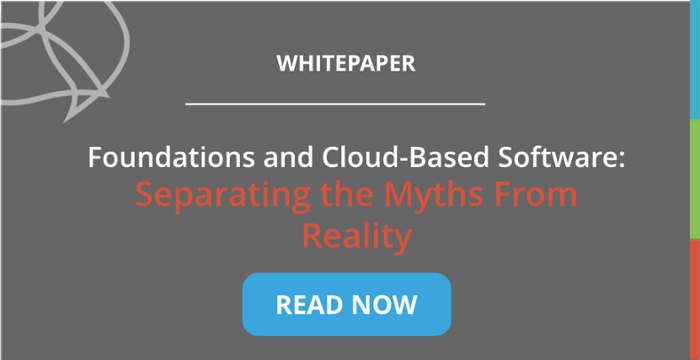 For foundations, cloud-based grants management software has evolved rapidly since its relatively recent introduction. Cloud-based systems have quickly become more common than local server systems, providing both casual and tech-savvy users with increased access to the data they need.
For foundations, cloud-based grants management software has evolved rapidly since its relatively recent introduction. Cloud-based systems have quickly become more common than local server systems, providing both casual and tech-savvy users with increased access to the data they need.
Ambiguous as the term "the cloud" may be, these hosted solutions, also referred to as software as a service, are not as complex as they sound. The client – that’s you! – pay a software vendor to store data on off-site servers rather than keep that information local. This allows you to save money on hardware and security while increasing data accessibility and scalability – benefits any organization can appreciate.
But despite the many benefits of migrating to the cloud, some foundations remain reluctant to make the switch. That’s understandable. Change is hard! So let’s break down a few myths surrounding the cloud to learn more about how it works and the processes vendors use to keep data safe.
Myth No. 1: The Cloud Isn’t Secure
The oldest concern about the cloud is also perhaps the least true. In fact, cloud-based companies provide vastly superior security than any foundation could achieve alone. While it "feels" safe to keep the physical storage of data close, most companies that do so put their data at far greater risk than it would be in the cloud.
Resources to maintain up-to-the-minute data security on premise are expensive. SaaS providers not only have those resources, but also specialize in defending against would-be attackers and constantly evolving threats. Tech giants have debuted powerful solutions over the past few years, such as Amazon Web Services, with robust security capabilities that free foundations from the task of keeping their software patched and updated against the latest threats.
Myth No. 2: You'll Lose Data During Migration
You can’t afford interruptions. Some foundation leaders hesitate to migrate because they fear losing data during the process and suffering extended downtime. Fortunately, reputable cloud service providers ensure neither will occur.
Cloud companies back up data constantly to ensure that even a rare total loss is only a slight inconvenience. In this case, constantly doesn’t mean every day or week but several times per hour.
Despite doubters’ fears that moving to the cloud will wipe all their data from the past several years, the worst-case scenario, in reality, is losing about 15 minutes of work – hardly a reason to shy away from the spike in productivity and security the cloud provides.
Myth No. 3: The Cloud Is Not Reliable
Every time a major hack or outage occurs, it becomes the headline of major news sites for several days. That’s not because the cloud is unreliable; it's because it is so much more reliable than any other solution that errors are newsworthy rather than common.
Cloud vendors create backups of backups to ensure your data remains safe, and as an extra precaution, they help you store local backups of those backups. No matter how dedicated a hacker or how serious an outage, cloud vendors have powerful, redundant systems in place to ensure that even the worst downtime only creates a minor inconvenience.
Myth No. 4: The Cloud Isn’t for Everyone
The cloud is not a one-size-fits-all solution for every organization, but cloud vendors should be able to offer the ultimate configurable product. By evaluating your individual needs, cloud vendors can offer tailored solutions that maximize the value of each purchase.
What's more, cloud-based software allows you to offer efficiencies such as flexible schedules and remote access. Combining those benefits with the added security and scalability of cloud technology, a move to the cloud makes sense for foundations of all sizes.
Don’t let myths and misconceptions prevent you from taking the next step into the world of cloud-based software. Follow the strategies found in our latest whitepaper entitled, Foundations and Cloud-Based Software: Separating the Myths From Reality, to help you identify, vet, and work with a cloud-based vendor that will help you optimize how you work – and how you make a difference to your grantee partners and the world.
